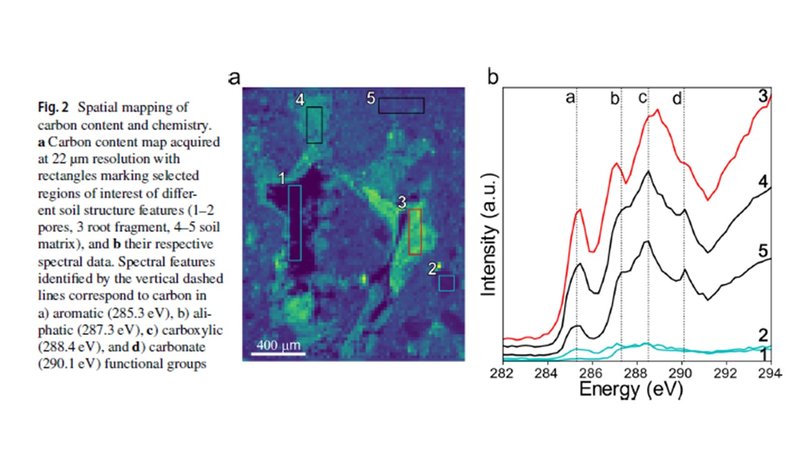CARBON SPECTROMICROSCOPY AT THE MICRO-SCALE
Mapping Soil Organic Carbon Species
Sept. 3, 2025
Soil organic carbon is crucial for soil fertility, productivity, and global carbon cycling. Despite significant progress in understanding carbon persistence and turnover, the underlying mechanisms require further study. A key challenge is visualizing and characterizing the spatial distribution of carbon within intact soil. This study introduces a novel approach to map carbon content at 35 μm resolution and composition at 22 μm resolution in intact environmental samples using synchrotron X-ray spectromicroscopy. X-ray fluorescence maps provided an overview of total carbon distribution, identifying carbonrich regions. Near-edge X-ray absorption fine structure spectromicroscopy was then used to obtain spatially resolved carbon speciation data within these regions. This method allowed the analysis of relatively large intact samples, of 16 mm in diameter and 15 mm in height, preserving various root and organic matter fragments as well as pores ranging between 35 and 850 μm. Spectral fitting with reference standards revealed distinct spatial patterns of aromatic, aliphatic, and carboxylic carbon compounds associated with different structural features. Aromatic carbon was enriched around root fragments and the soil matrix; while, carboxylic compounds were concentrated at pore–matrix interfaces, indicating a correlation between soil pore structure and carbon chemical composition. This novel approach provides significant insights into the interplay between pore architecture and organic molecular diversity, key factors governing carbon protection and persistence in soils.
Dor, M. et al., Micro-scale mapping of soil organic carbon using soft X-ray spectromicroscopy. Environmental Chemistry Letters 2025, 23, 381-386.
